It’s easy to assume that if you buy medicine from a pharmacy, it’s real. But that’s not always true. In 2023, the World Health Organization estimated that 1 in 10 medicines sold globally are fake - and in some places, it’s as high as 1 in 3. These aren’t just weak or expired pills. They’re dangerous imitations, sometimes laced with poison, sometimes empty, sometimes filled with something completely different - like fentanyl in a pill you thought was oxycodone. And the symptoms you feel after taking them? They’re not side effects. They’re warning signs you’ve been poisoned.
You Took Your Medicine - But Nothing Happened
If you’ve ever taken your blood pressure pill and your headache didn’t go away, or your insulin didn’t lower your sugar, and you know you took it correctly - that’s not bad luck. It’s the most common red flag. Eli Lilly reported that 89% of counterfeit medication complaints in 2022 came from people whose drugs simply didn’t work. No relief. No change. No effect at all. That’s because many fake pills contain no active ingredient. They’re sugar, chalk, or talc in a capsule that looks just like the real thing. If your asthma inhaler suddenly stops working, or your antidepressant doesn’t lift your mood after days of consistent use, don’t assume your condition got worse. Assume the pill might be fake.New, Strange, or Severe Side Effects
This is where things get dangerous. If you’ve never had nausea from your thyroid medication before, but now you’re vomiting every morning - that’s not normal. If your heart starts racing without exercise, or you feel dizzy out of nowhere, or you break out in a rash you’ve never had - stop taking the pill. The FDA found that 74% of confirmed counterfeit cases involved patients reporting new or unusual side effects. Why? Because fake pills often contain toxic fillers, industrial dyes, or unapproved chemicals. One patient in Birmingham took what he thought was generic Adderall. Instead, it contained buprenorphine - an opioid. He went into withdrawal within hours. Another person took fake Viagra and ended up in the ER with sudden, severe low blood pressure because the pill had been laced with an unregulated vasodilator. These aren’t side effects. They’re poison.Physical Signs the Pill Doesn’t Match
Look closely. Really look. Compare your current pills to the last batch you had. Check the color. Is it slightly off? A little paler? Darker? That matters. Legitimate medicines are made with precision. The size, shape, and texture are consistent. If your pills are now crumbly, cracked, or have a bubbled coating, they’re not real. Spelling errors on the label? That’s a huge red flag. Pfizer found that 78% of counterfeit pills they investigated had misspelled words - “Metoprolol” spelled as “Metoprolol,” “Lisinopril” as “Lisinopril.” Check the imprint. If your 10mg Lisinopril used to have a “10” stamped on one side, and now it has a “10L” or no stamp at all - that’s not a manufacturing error. That’s fraud. Packaging matters too. Is the bottle seal broken? Is the expiry date smudged or changed? Are the holograms missing? The UK Medicines and Healthcare products Regulatory Agency found that 63% of counterfeit medicines had altered expiry dates.Respiratory Failure, Coma, or Pinpoint Pupils - Act Now
This is the worst-case scenario. In 2023, the Centers for Disease Control reported 12,000 U.S. deaths linked to counterfeit pills containing fentanyl. These pills are made to look like oxycodone, Xanax, or Adderall. But they’re filled with a synthetic opioid 50 to 100 times stronger than heroin. The symptoms come fast: drowsiness, confusion, then slowed breathing, then shallow breaths, then no breathing. Your pupils shrink to pinpoints. You become unresponsive. This isn’t an overdose you can sleep off. This is death waiting to happen - and it can occur within 15 minutes. If you or someone you know takes a pill and then suddenly stops talking, can’t stay awake, or has blue lips or fingernails - call 999 immediately. Administer naloxone if you have it. Every second counts.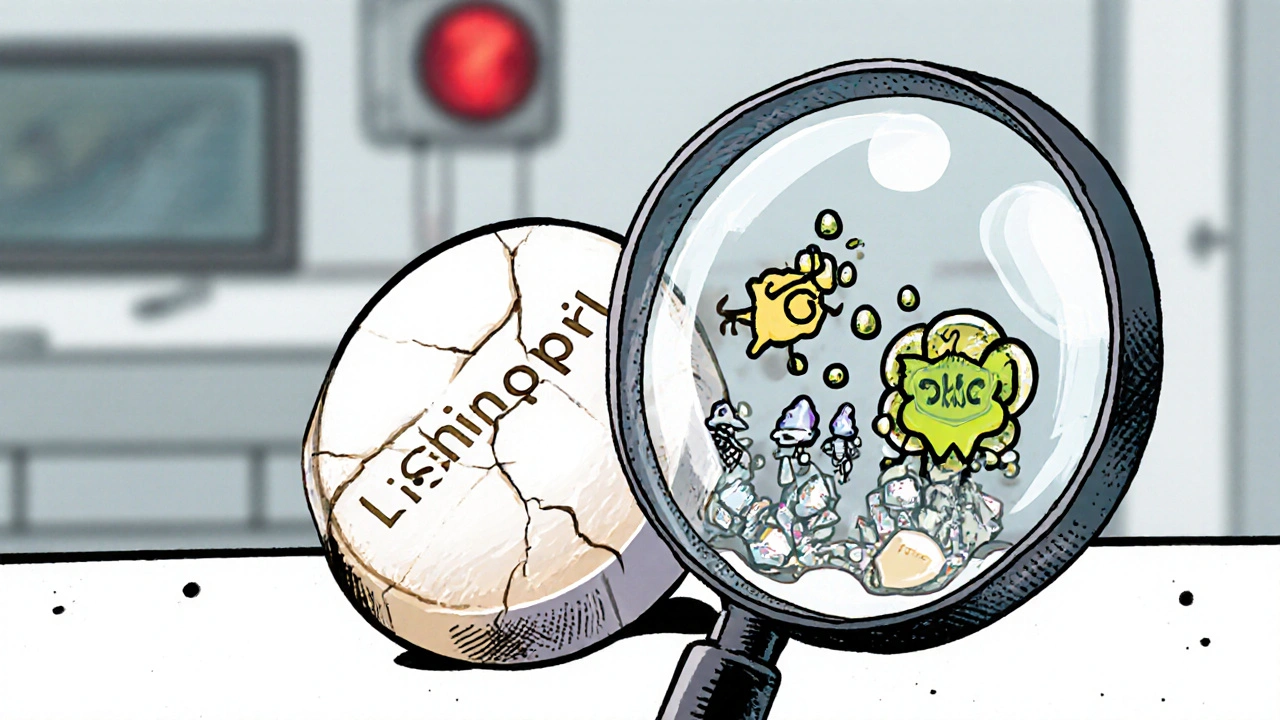
Heart Racing, High Blood Pressure, Overheating - Watch for Stimulant Fakes
Counterfeit Adderall and Ritalin are also common. These pills often contain methamphetamine instead of amphetamine. The effects are brutal: heart rate over 120 beats per minute, blood pressure spiking above 180/110, body temperature rising past 104°F. You might feel wired, jittery, unable to sit still. Your skin might feel hot, dry, flushed. You could have chest pain, seizures, or hallucinations. In 2021, the Drug Enforcement Administration linked dozens of deaths in teenagers to these fake stimulants. One 17-year-old in Manchester took what he thought was Adderall to study for exams. He collapsed in class. Autopsy found methamphetamine and traces of levamisole - a veterinary dewormer. He didn’t die, but he lost part of his vision.Organ Damage, Nausea, Jaundice - Hidden Toxins
Some fake pills don’t kill you right away. They poison you slowly. Counterfeit antimalarials often contain heavy metals like lead or mercury. Fake antibiotics can be contaminated with industrial solvents. One patient in London took counterfeit amoxicillin for a tooth infection. After three days, her liver enzymes spiked. She developed jaundice. She didn’t know the fake pill contained carbon tetrachloride - a chemical used in cleaning products. It took weeks in the hospital to recover. The WHO says 18% of counterfeit medicines contain toxic contaminants. These aren’t accidents. They’re deliberate. Criminals use cheap, toxic substances because they’re cheap. And you’re the one paying the price.What to Do If You Suspect a Fake
Don’t take another pill. Don’t flush it. Don’t throw it in the trash. Keep it. Call your pharmacist immediately. Tell them the brand, the lot number, the date you got it, and what you’ve noticed - the color, the smell, the side effects. Pharmacists have access to databases that track counterfeit lots. Eli Lilly, Pfizer, and Merck all maintain public lists of known fake batch numbers. You can call their toll-free numbers or check their websites. If your pharmacy won’t help, contact the Medicines and Healthcare products Regulatory Agency (MHRA) in the UK. Report it. You might save someone’s life. The MHRA intercepted 15,000 fake cancer pills in 2007 after one suspicious call. That call saved hundreds.
How to Avoid Fake Medications
Never buy medicine online unless the website is verified. The DEA says 96% of online pharmacies selling prescription drugs are illegal. Look for the VIPPS seal (Verified Internet Pharmacy Practice Sites) or the EU common logo for licensed online pharmacies. If a site offers pills without a prescription, walks away from your medical history, or sends drugs in plain envelopes - it’s a trap. Always get your prescriptions filled at a licensed pharmacy you trust. If you’re traveling, buy medicine locally - don’t bring it from abroad unless you’re certain of the source. Keep your original packaging. Compare every refill. If something looks off - trust your gut. Your body knows.It’s Not Just About Pills
Counterfeit drugs come in creams, injections, inhalers, even eye drops. In 2023, the FDA warned about fake Muro 128 eye ointment. Seventeen people lost vision after using it. The fake version had the wrong pH and contained industrial preservatives. It burned their eyes. One woman went blind in one eye. Fake insulin pens? They deliver the wrong dose. Fake insulin can kill you in hours. Fake asthma inhalers? They don’t open your airways. You suffocate slowly. Every type of medicine can be faked. That’s why vigilance matters - not just for pills, but for everything you put into your body.Why This Is Getting Worse
Criminals are getting smarter. Fake pills now have the exact same imprint, color, and weight as the real ones. They use 3D printing and chemical analysis to copy them perfectly. The only way to be 100% sure is lab testing - and that’s not something you can do at home. But you can still protect yourself. Pay attention. Ask questions. Don’t be embarrassed to say, “This doesn’t look right.” That’s the first line of defense. The WHO predicts counterfeit drugs will grow by 25% each year through 2025. That means more fake opioids. More fake cancer drugs. More fake heart pills. More people dying because they trusted the wrong source. You can’t stop the criminals. But you can stop yourself from becoming a statistic.Can counterfeit pills look exactly like real ones?
Yes. Modern counterfeiters use high-quality printing, precise molds, and even reverse-engineered chemical formulas to make fake pills look identical to the real thing. They copy the size, color, imprint, and even the packaging. That’s why physical inspection alone isn’t enough. You need to notice changes in how you feel after taking the pill - like sudden side effects or no effect at all - and report it.
What should I do if I think I’ve taken a fake pill?
Stop taking it immediately. Keep the pill and packaging. Call your pharmacist or doctor right away. Report it to the MHRA in the UK using their online portal. If you’re experiencing symptoms like difficulty breathing, chest pain, extreme drowsiness, or confusion, call 999. Don’t wait. Fake pills can cause rapid, life-threatening reactions.
Are online pharmacies ever safe?
Only if they’re verified. Look for the VIPPS seal (U.S.) or the EU common logo for licensed online pharmacies. Avoid any site that sells prescription drugs without a valid prescription, offers “miracle cures,” or ships in plain packaging. The DEA estimates 96% of online pharmacies selling prescription drugs are illegal - and 89% of them sell counterfeit drugs.
Can fake medicine cause long-term damage?
Absolutely. Fake antibiotics can cause antibiotic resistance. Fake insulin can damage your organs from repeated under- or overdosing. Fake cancer drugs can allow tumors to grow unchecked. Toxic contaminants like lead, mercury, or industrial solvents can cause liver or kidney failure over time. Even if you don’t get sick right away, long-term exposure to fake meds can silently wreck your health.
How can I check if my medicine is real?
Compare your current pills to your last prescription - check color, shape, imprint, and packaging. Look for spelling errors, missing holograms, or broken seals. Call your pharmacy and ask if they’ve had any recalls. Check the manufacturer’s website - companies like Pfizer and Eli Lilly have tools to verify lot numbers. If anything feels off, don’t take it. Report it.

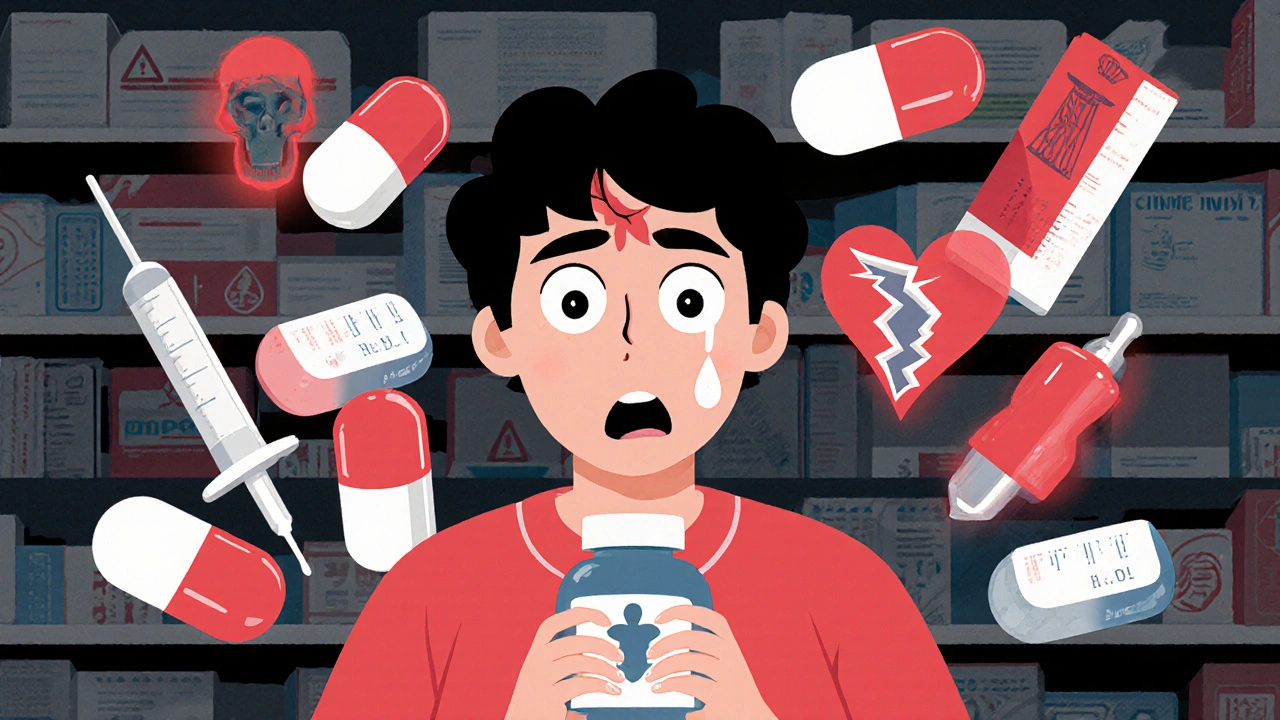
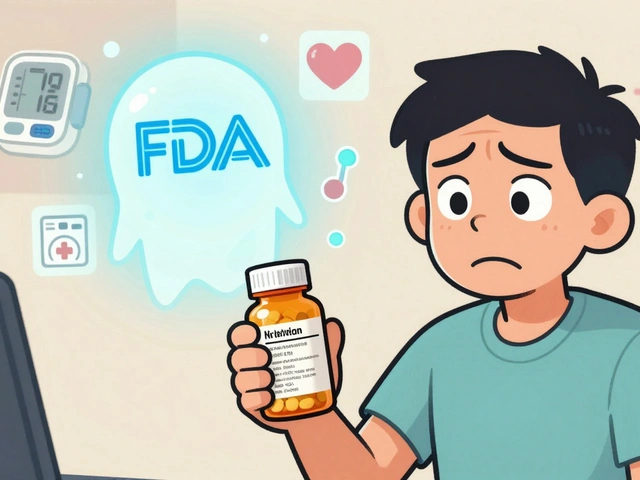

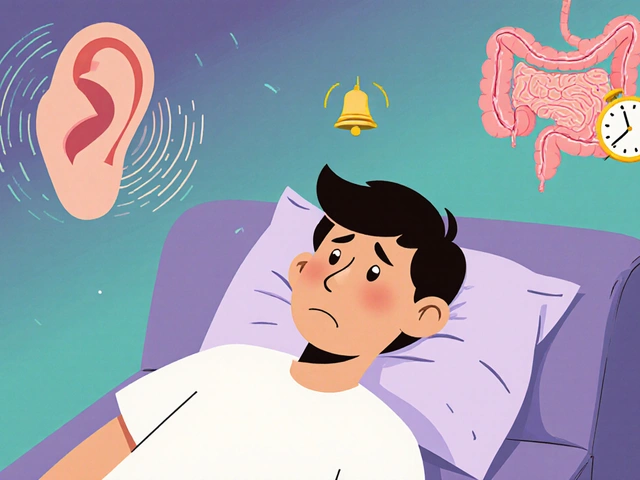
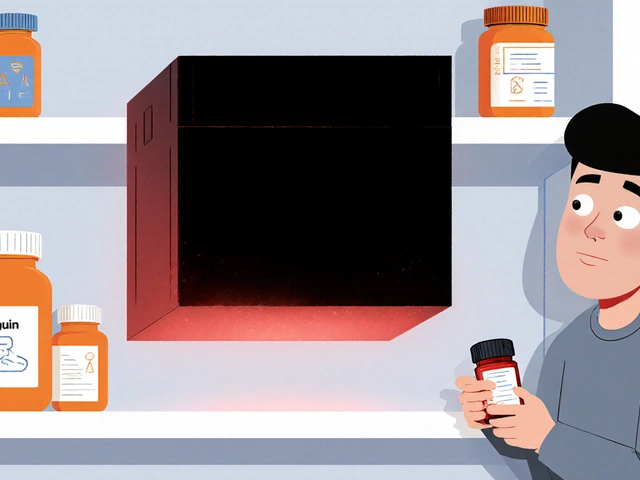

Neoma Geoghegan
November 24, 2025 AT 02:48Took my BP med last week. Nothing. Zero effect. Knew something was off. Turned out the bottle seal was loose. Called my pharmacy. They flagged it as a known fake batch. Saved my life.
Don't ignore the silence.
Bartholemy Tuite
November 25, 2025 AT 19:24Bro i used to buy my adderall off some guy on snapchat lmao. Thought i was so smart. One day i took it and my heart felt like it was gonna punch through my ribs. Sweating, shaking, couldn't talk. Ended up in er. Turns out it was meth + levamisole. I'm lucky i didn't die. Now i only get meds from the real pharmacy. Don't be me. Just say no to sketchy online dealers. Also fyi the guy who sold it? Got arrested last month. Karma's a bitch.
Stay safe out there fam.
Sam Jepsen
November 27, 2025 AT 04:58Just want to say this post is incredible. So many people don't realize how dangerous this is. I work in healthcare and we see this way more than you think. Last month a patient came in with liver failure from fake amoxicillin. Contained carbon tetrachloride. That's a CLEANING PRODUCT. Imagine that. These aren't just 'bad pills'-they're weapons. Please, if you're buying online, stop. If you're unsure, ask your pharmacist. They're your best defense.
And if you're a doc? Push this on your patients. It's life or death.
Yvonne Franklin
November 28, 2025 AT 01:02Check the imprint. Always. My mom’s lisinopril changed from 10 to 10L. She thought it was a batch difference. Didn’t report it. Ended up with a stroke. Turned out the pill had no active ingredient. The pharmacy had no record of that lot. She’s fine now but it took three months to trace it. Don’t wait. Check. Report. Save lives.
Danny Nicholls
November 28, 2025 AT 06:52OMG this is so real 😭 I took fake xanax last year thought i was gonna die. Breathing like a fish outta water. Called 911. Naloxone saved me. Now i only get meds from my local pharma. And i check every pill like it's a bomb. Don't be a hero. Don't risk it. ❤️
Robin Johnson
November 30, 2025 AT 05:34Counterfeit insulin is the quietest killer. No one talks about it. I’ve seen patients with uncontrolled diabetes who swear they’re taking their dose. Turns out the pens were empty. Or filled with saline. One woman lost her foot. Another went into DKA three times. The packaging looks real. The pen clicks like it’s working. But nothing’s coming out. If your glucose isn’t dropping and you’re sure you’re dosing right-question the pen. Don’t assume. Test it. Report it.
Latonya Elarms-Radford
December 2, 2025 AT 00:52Let us not forget the metaphysical horror of this reality: we live in a world where the very substances meant to heal us have been commodified into instruments of existential betrayal. The pill you swallow is no longer a promise-it is a gamble with entropy. The pharmaceutical industry, once a temple of science, has become a hollow cathedral of corporate negligence, while criminal syndicates, armed with 3D printers and chemical knowledge, outmaneuver regulatory bodies that still operate on paper forms and fax machines. We are not just victims of fraud-we are participants in a dystopian ritual where trust has been weaponized. The body, once a vessel of biology, is now a battleground for counterfeit theology. And yet, we still swallow. Why? Because hope is cheaper than verification.
And that, my friends, is the true poison.
Mark Williams
December 3, 2025 AT 19:24WHO data shows 18% of counterfeit meds contain toxic contaminants. That’s not an outlier-it’s systemic. The real issue isn’t just fentanyl or meth-it’s the unregulated fillers: industrial dyes, solvents, heavy metals. These aren’t mistakes. They’re cost-cutting. And the regulatory gaps? They’re intentional. Pharma companies don’t invest in track-and-trace because it’s expensive. Governments don’t fund border inspections because it’s ‘low priority.’ Meanwhile, people die in quiet bedrooms, alone, with a bottle labeled ‘Lisinopril’ that’s just chalk and lead. We need blockchain verification. We need mandatory batch scanning at point of sale. We need to treat this like a public health emergency. Because it is.
james lucas
December 4, 2025 AT 08:26my aunt took fake heart med for 6 months. thought she was just getting worse. turned out the pill had no active ingredient. her cardiologist finally caught it when he saw the lot number didn't match. she had a massive heart attack because of it. now she's on oxygen. just saying-don't be like us. check your pills. call your doc. don't wait till it's too late. i'm so mad i didn't know sooner.
Melvina Zelee
December 4, 2025 AT 16:49you know what's wild? fake eye drops. i never thought about it till my neighbor went blind in one eye from fake muro 128. it's not just pills. it's everything. inhalers, insulin, even cream for eczema. i used to buy my asthma inhaler online because it was cheaper. now i drive 45 mins to the hospital pharmacy. worth it. your body doesn't lie. if it feels off-stop. save the pill. call someone. you might be the reason someone else lives.
ann smith
December 6, 2025 AT 12:02Thank you for sharing this vital information. I have shared it with my senior group at the community center. Many of them buy medications online to save money. This could literally save their lives. Please keep raising awareness. We must protect our most vulnerable.
With gratitude,
Ann
Julie Pulvino
December 7, 2025 AT 07:17My mom’s fake blood thinner was the scariest thing i’ve ever seen. She didn’t even know. Just said she felt ‘off’ for two weeks. Then she had a mini stroke. Turned out the pill had no warfarin. Just sugar. We found out because her INR was through the roof. She’s okay now but scared to even leave the house. I’m going to start checking every prescription we get. No more trusting the label. Only trusting what we know. This isn’t fear-it’s responsibility.